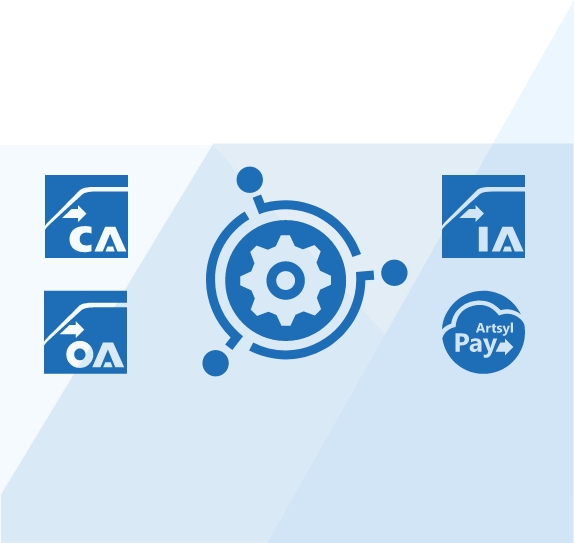A credit invoice and credit note are two commonly used terms in accounting, bookkeeping, and business. These terms can be confusing, especially for beginners who are still trying to come to grips with the basics of accounting. In this blog post, we will explore these two concepts, what they mean, how they differ, and when they are used. We will also outline the importance of these documents in tracking and managing your business finances.
What is a Credit Invoice?
A credit invoice, also known as a credit memo, is a document issued by a supplier to a customer when money is owed for returned or faulty goods, damaged deliveries, or discrepancies in pricing. Credit invoices can be used by businesses to rectify any mistakes in their billing system or to establish good customer relations.
Credit invoices are important for tracking, managing, and reporting your business finances. They allow you to reconcile and keep accurate records of all sales transactions, including canceled, refunded, or returned goods. Credit invoices can also be used to adjust the customer’s outstanding balance and the supplier’s accounts receivable.
A credit invoice should contain similar information as the original invoice such as:
- Business details of both the seller and buyer
- Date of issue
- Credit Invoice Number
- Original Invoice Number it relates to
- Itemized list of goods or services being credited
- The adjusted total amount and tax
Invoice Automation Software
Related Videos
What is a Credit Note?
A credit note, also sometimes called a credit memo, is a document issued by the supplier to the customer, stating that credit has been applied to the customer’s account for goods or services that are not expected to be returned. Credit notes are typically issued for a variety of reasons, including overpayment, discounts, rebates, or promotions.
Credit notes play a critical role in maintaining accurate accounting records. They help businesses track and manage customer refunds, adjustments, and adjustments to account balances. Credit notes can also be issued by the supplier to correct any errors or discrepancies in billing or to establish good customer relations.
Why get stuck in the monotonous loop of manual order management when you can set it and forget it? With Artsyl OrderAction, generate sales orders at the push of a button. Discover how we’re revolutionizing order management. Take action now!
Book a demo now
How Do Credit Invoices Differ from Credit Notes?
Credit invoices and credit notes are closely related but differ in several ways. Credit invoices are used to rectify mistakes or correct billing errors, usually as a result of returned or faulty goods. In contrast, credit notes are issued when there is not an expectation of goods being returned but rather when overpayments, credits, discounts, or rebates have been applied.
Credit notes are also different from debit notes, which are issued by the supplier, stating that additional charges or a debit is applied to the customer’s account for goods or services received. Debit notes are generally issued to correct understatements or overstatements in previous invoices or to adjust for previously unrecorded transactions.
Unlock a new level of financial efficiency for your business! Automate your financial processes with Artsyl docAlpha and experience a streamlined cash flow like never before. Don’t wait — level up your
financial game today!
Book a demo now
When Are Credit Invoices and Credit Notes Used?
Credit invoices and credit notes are common in business transactions between the supplier and the customer. They are used to rectify errors or discrepancies and establish good customer relations.
Credit invoices are typically issued when the customer returns one or more goods to the supplier, and the supplier has agreed to provide a credit or refund. Credit notes are generally issued when there is an overpayment, discount, rebate, or promotion that is applied to the customer’s account.
Both the credit invoice and credit note play an integral role in maintaining accurate and up-to-date accounting records.
Business Cases: Using Credit Invoices and Credit Notes
Credit invoices, also known as credit notes, are financial documents issued by a seller to a buyer, indicating a refund or credit for various reasons, such as returned goods, overpayment, or other adjustments. They can play a crucial role in different business situations and are used to maintain accurate financial records. Here are some real-life scenarios where credit invoices are commonly employed.
Credit Invoices in Retail Industry
Imagine that a customer returns a purchased item because it is damaged or defective. The retailer issues a credit invoice to confirm that the item has been returned and that the customer is entitled to a refund or exchange. This helps in inventory management and ensures customer satisfaction.
Credit Invoices in Manufacturing Sector
A bulk shipment arrives with damaged goods. A credit invoice is issued for the value of the damaged goods, which can be set off against future orders. This way, credit invoice streamlines the handling of faulty products and maintains a record for quality control.
Credit Invoice in Subscription-Based Services
Imagine that a subscriber cancels their service but has already been billed for the next month. The service provider issues a credit invoice for the prorated amount. This maintains trust and enhances the possibility of the customer returning in the future.
Credit Notes in Consulting Services
An ongoing project gets canceled before the work is completed. A credit note is issued for the unutilized portion of the retainer fee. This way, a credit note keeps financial records straight and upholds the consultancy’s reputation for professionalism.
Credit Invoice in Event Management
An event gets canceled due to unforeseen circumstances, such as weather or public health concerns. Credit invoices are issued to vendors and ticket-holders. This eases the process of reimbursement and helps in auditing.
Credit Notes in E-commerce Platforms
A customer receives the wrong item and wants to return it. The company issues a credit note that can be applied to the customer’s next purchase or refunded. This way, a credit note promotes customer loyalty and simplifies the return process.
Credit Note in Business Services
Imagine that an error occurs in billing, resulting in the client being overcharged. A credit note is issued to correct the invoice. It corrects the error transparently, thereby maintaining business integrity.
Credit Invoices in Hospitality Industry
A guest has been billed for services they didn’t use, such as mini-bar or room service. The hotel issues a credit invoice to reconcile the account. A credit invoice helps in dispute resolution and maintains a positive customer relationship.
Key Takeaways for Businesses:
Issuing credit invoices maintains transparency in financial transactions and keeps the business in line with accounting and tax regulations.Correcting billing errors or accepting returned goods improves customer relations and trust.
Credit invoices are valuable tools for various business situations. They are essential for maintaining accurate financial accounts, complying with legal requirements, and ensuring customer satisfaction.
Are discrepancies in your invoices disrupting your business? Ensure 100% accuracy with Artsyl InvoiceAction’s advanced recurring invoice management system. Say goodbye to errors and hello to accurate, timely invoicing. Get started now!
Book a demo now
Credit Invoices and AR Automation
Credit invoices and Accounts Receivable (AR) automation are closely interlinked in the context of managing a business’s financial operations. Automating the AR process can significantly improve the efficiency and accuracy of handling credit invoices, among other transactions. Below are some ways in which AR automation can streamline the handling of credit invoices:
Benefits of AR Automation for Credit Invoices
- Speed and Efficiency: Automation speeds up the process of issuing credit invoices. When a return is processed or an overcharge is detected, the system can automatically generate a credit invoice, saving valuable time.
- Accuracy and Error Reduction: Automated systems are less prone to human error. Accurate credit invoicing ensures that the correct amounts are reflected in both the seller’s and buyer’s financial records.
- Improved Cash Flow Management: Automated tracking of credit invoices allows businesses to have real-time insights into their cash flow, which is crucial for financial planning and decision-making.
- Compliance and Audit Trails: AR automation software often comes with features that ensure all credit transactions are compliant with accounting standards and tax laws. They also offer comprehensive audit trails for future reviews.
- Customer Satisfaction: Automated credit invoicing can lead to quicker resolution of customer queries and disputes, thereby enhancing customer satisfaction and loyalty.
- Reduced Operational Costs: Automation reduces the need for manual data entry and oversight, thereby cutting down operational costs.
Real-World Scenarios When AR Automation Saves Time and Money
B2B Wholesalers
In a scenario where bulk orders are often placed and adjusted, AR automation can manage these fluctuations efficiently by issuing or adjusting credit invoices as needed.
E-commerce Businesses
When dealing with a high volume of returns and exchanges, automation ensures that credit invoices are generated and sent out promptly.
Utility Providers
For businesses where the services are usage-based, and adjustments are frequent, automated AR can easily manage the issuance of credit notes for any overbilling.
Healthcare Providers
In cases where insurance claims may require adjustments, automation can efficiently handle the issuance of credit invoices.
Best Practices for Implementing AR Automation
Before implementing AR automation, assess the specific needs of your credit invoicing system and identify which aspects require automation. Choose an AR automation system that integrates smoothly with your existing accounting or ERP software.
As the next step, ensure that staff responsible for AR management are adequately trained on the new system. Regularly monitor the system’s performance to ensure that it meets the intended objectives, and make adjustments as necessary.
Automating the process of credit invoicing within an Accounts Receivable framework offers both operational advantages and strategic benefits. By integrating this into your AR system, you not only increase efficiency and reduce errors but also enhance compliance and customer satisfaction.
Given the potential impact on cash flow and business relationships, AR automation is increasingly becoming a best practice for handling credit invoices.
Is your growing client list making order management more complicated? Simplify and scale your sales order processing with Artsyl OrderAction’s robust order management features. Let us handle the numbers so you can focus on your business. Act now!
Book a demo now
Final Thoughts: Using Credit Invoices and Credit Notes to Benefit Your Business
In summary, a credit invoice and credit note are two significant documents in bookkeeping, accounting, and business transactions. Credit invoices are used to correct billing mistakes that occur when goods are returned to the supplier, while credit notes are issued for overpayments, discounts, rebates, or promotions.
Understanding the differences between the two documents and their use is essential for tracking and managing your business finances accurately. Always ensure that you have a clear understanding of your credit invoice and credit note needs to establish and maintain good customer relations and keep accurate accounting records.
FAQ
What is a Credit Invoice or Credit Note?
A Credit Invoice or Credit Note is a financial document issued by a seller to a buyer to correct or adjust a previously issued invoice. It could be due to a return, overpayment, or any other transaction that requires a change in the original billed amount.
Are Credit Invoices and Credit Notes the Same?
Yes, the terms are generally used interchangeably, although the terminology may vary based on jurisdiction or industry standards.
When Should a Credit Invoice be Issued?
A credit invoice should be issued in various situations such as:
- When goods are returned by the customer.
- If there was an overbilling or incorrect billing.
- If the goods or services did not meet the contract’s terms or quality standards.
How Do Credit Invoices Affect Accounts Receivable (AR)?
Credit Invoices reduce the amount that is due from the buyer to the seller, effectively reducing the Accounts Receivable for the business.
Can Credit Invoices Be Automated?
Yes, modern accounting and AR automation software often have features that allow for the automated generation of credit invoices based on set triggers or conditions.
Are Credit Invoices Legal Documents?
Credit Invoices are financial records and can serve as legal proof of a change in transaction terms between the seller and the buyer. However, their status as a legal document may vary by jurisdiction.
How Do Credit Invoices Affect Taxes?
Credit Invoices should also adjust the tax amount that was initially charged on the original invoice. This ensures that both parties’ financial records are compliant with tax regulations.
Can a Credit Invoice Be Reversed?
Typically, once a credit invoice has been issued, it cannot be «reversed» but another invoice or credit note can be issued to correct any errors or adjustments needed.
Imagine a world where your invoices manage themselves, and you can focus on what really matters—your business.
That world is a click away with Artsyl docAlpha. Embrace the future of intelligent financial
process automation today!
Book a demo now
Do Credit Invoices Have an Expiry Date?
Credit Invoices generally do not have an expiry date unless specified by company policy or contract between the buyer and seller.
How Should I Record a Credit Invoice in Accounting Software?
The specific steps will vary depending on the software you’re using, but generally, you will have to mark the original invoice as adjusted or partially paid, and then create a new credit invoice that outlines the adjustments made.
Do I Need to Issue a Credit Invoice for Small Adjustments?
Issuing a credit invoice for small adjustments is generally good practice as it keeps financial records clear and transparent, which is essential for both accounting and compliance reasons.
How Does AR Automation Help in Managing Credit Invoices?
AR automation can streamline the process of issuing and tracking credit invoices, thus improving operational efficiency, reducing errors, and aiding in compliance.
Can I Send Credit Invoices Electronically?
Yes, electronic invoicing is generally accepted and can make the process of issuing and receiving credit invoices more efficient.
Is It Necessary to Notify the Buyer When Issuing a Credit Invoice?
Yes, it is standard practice to notify the buyer when a credit invoice has been issued to maintain transparency and good business relationships.
What Is the Impact of Credit Invoices on Cash Flow?
By reducing the amount due from customers, credit invoices can temporarily reduce cash inflow. Businesses need to account for this in their cash flow planning.
Can a Credit Invoice Be Paid Out in Cash?
The method of settling a credit invoice—whether as a deduction in future payments or as a cash refund—depends on company policy or the agreement between buyer and seller.




 The Ultimate Guide to Final Invoices
The Ultimate Guide to Final Invoices The Basics of an Invoice: The Standard Invoice
The Basics of an Invoice: The Standard Invoice Your Guide to Commercial Invoices
Your Guide to Commercial Invoices Interim Invoice: What Is It?
Interim Invoice: What Is It? Self-Billing Invoice: What Is It?
Self-Billing Invoice: What Is It? How to Build an Automated Invoice Processing Workflow
How to Build an Automated Invoice Processing Workflow